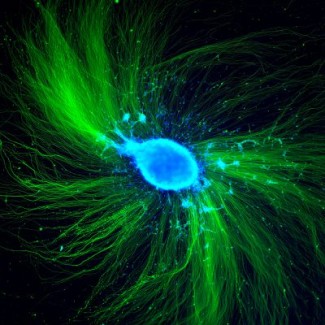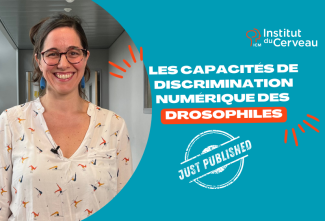Evaluating a number of elements, be they individuals in a group, twigs in a nest or fruit on a branch, is an important skill in many animals. But the neural circuits on which it rests are still poorly understood. To address this knowledge gap, Mercedes Bengochea and her colleagues at Paris Brain Institute developed a model of digital cognition in the fly. Their results are surprising: Drosophila are able to estimate a number of units, and show a natural preference for large quantities. This numerical judgement requires the activation of specific neurons, LC11. Located in the optic lobe, they also operate in a social context, allowing the fly to adapt its behaviour in response to a threat. The ability to "count" friends and enemies may therefore have played a role in the evolution of these insects, say researchers in a new study published in Cell Reports.
Pour en savoir plus

La maladie d'Alzheimer
Face à l’allongement de la durée de vie et à la complexité des mécanismes biologiques à l’origine des maladies neurodégénératives, on estime que 1,2 millions de personnes sont touchées par la maladie d’Alzheimer en 2023 en France. Avec 225 000...
Read more
La schizophrénie
La schizophrénie est une pathologie psychiatrique appartenant à la classe des troubles psychotiques. Il s’agit d’une pathologie très invalidante et relativement fréquente. On dénombre environ 600 000 personnes atteintes en France et 0,7% de la...
Read more
